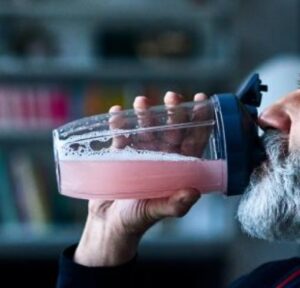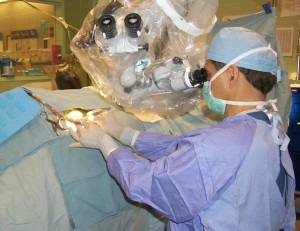Put a Spring in your Step- Keeping Muscles Strong as You Age
 April 2023 It’s spring again and with warm weather the urge for many is to get back into shape. Unfortunately, as we age we can become less flexible and lose muscle mass making exercise difficult and increased the risk for injury. Another major consequence of muscle loss is a greater risk of falling.
April 2023 It’s spring again and with warm weather the urge for many is to get back into shape. Unfortunately, as we age we can become less flexible and lose muscle mass making exercise difficult and increased the risk for injury. Another major consequence of muscle loss is a greater risk of falling.
Changes in connective tissue and muscle are often related to prior overuse or reduced physical conditioning. In addition, ligaments and tendons begin to dehydrate due to reduced production or retention of lubricants. Calcium deposits build up and muscle fibers are replaced with fatty, collagenous fibers that reduce joint mobility, muscle tone and strength. The good news is for many; age-related muscle loss can be prevented or even stopped with better physical activity and specific dietary choices.
Chronic muscle loss affects 30% of people older than 60 years and more than 50% of those older than 80 year. Muscle loss as we age is associated with a four times increased likelihood of disability, such as the need for canes and walkers. It is estimated the cost for treating musculoskeletal disease exceeds $800 billion annually in the US.
What CAN be DONE?
First and foremost is exercise. In order to improve joints, muscle, bone, balance and mobility you must begin a regular exercise program. Walking just 30 minutes a day, every day, is enough for many people to maintain muscle tone and strength and help reduce the loss of calcium from our bones.
For most muscle groups resistance training with even very light weights has a positive effect on muscle mass. Working out in a local gym or health club may be ideal but home exercises can work just as well. Using a sturdy sac with handles and filled with 5 or 6 soup cans can be just right for some people. The keys are to warm up the muscles first with range of motion exercises followed by low weights but high reps. Like any new exercise regime you should clear it with your healthcare professional first. And remember if something hurts – stop – to prevent injury.
Muscle Mass and Proper Dietary Protein
The reasons for muscle loss are many and involve reduced use, hormonal changes, decreased protein synthesis and reduced protein consumption to name a few. Since activity and diet generally play a major role, both are important to address. Reduction in dietary protein begins to occur after about the age of 35 years in most people. About 25% of men and 35% women consume less than the current Recommended Dietary Allowance (RDA) of dietary protein. Combining daily protein consumption with a variety of amino acids along with exercise is superior to slow or prevent muscle loss, increase strength and reduced fat mass, compared to those not taking increased protein.
and reduced protein consumption to name a few. Since activity and diet generally play a major role, both are important to address. Reduction in dietary protein begins to occur after about the age of 35 years in most people. About 25% of men and 35% women consume less than the current Recommended Dietary Allowance (RDA) of dietary protein. Combining daily protein consumption with a variety of amino acids along with exercise is superior to slow or prevent muscle loss, increase strength and reduced fat mass, compared to those not taking increased protein.
The amino acid leucine, found in cheese, soybeans, beef, chicken, pork, nuts, seeds, fish, seafood, and beans, is required for the manufacture of new muscle cells. Critical amino acids are found in both food and protein supplements.
Although radical diet changes can be unhealthy, there are both food and dietary supplement protein sources to prevent or reduce muscle loss as we age. Increasing your dietary protein should be discussed with your healthcare provider if you have any significant health problems, especially kidney disease or insufficiency. But for many the combination of increased resistance training and adequate protein supplementation will result in better muscle tone, improved bone health and hopefully a safe and active spring.




 Dr. Maroon received an athletic scholarship to Indiana University in Bloomington, Indiana where as an undergraduate, he was named a Scholastic All-American in football. Dr. Maroon has successfully maintained his personal athletic interests through participation in 9 marathons and more than 72 Olympic-distance triathlon events. However, his greatest athletic accomplishment is his participation in 8 Ironman triathlons (Hawaii – 1993, 2003, 2008, 2010, 2013; Canada – 1995; New Zealand – 1997; Germany – 2000), where he usually finishes in the top 10 of his age group. Recently, in July 2012 and 2013, he finished second and third, respectively, in his age group in the Muncie, Indiana half Ironman triathlon. In October 2013 he completed his 5th World Championship Ironman in Kona, Hawaii.
Dr. Maroon received an athletic scholarship to Indiana University in Bloomington, Indiana where as an undergraduate, he was named a Scholastic All-American in football. Dr. Maroon has successfully maintained his personal athletic interests through participation in 9 marathons and more than 72 Olympic-distance triathlon events. However, his greatest athletic accomplishment is his participation in 8 Ironman triathlons (Hawaii – 1993, 2003, 2008, 2010, 2013; Canada – 1995; New Zealand – 1997; Germany – 2000), where he usually finishes in the top 10 of his age group. Recently, in July 2012 and 2013, he finished second and third, respectively, in his age group in the Muncie, Indiana half Ironman triathlon. In October 2013 he completed his 5th World Championship Ironman in Kona, Hawaii.